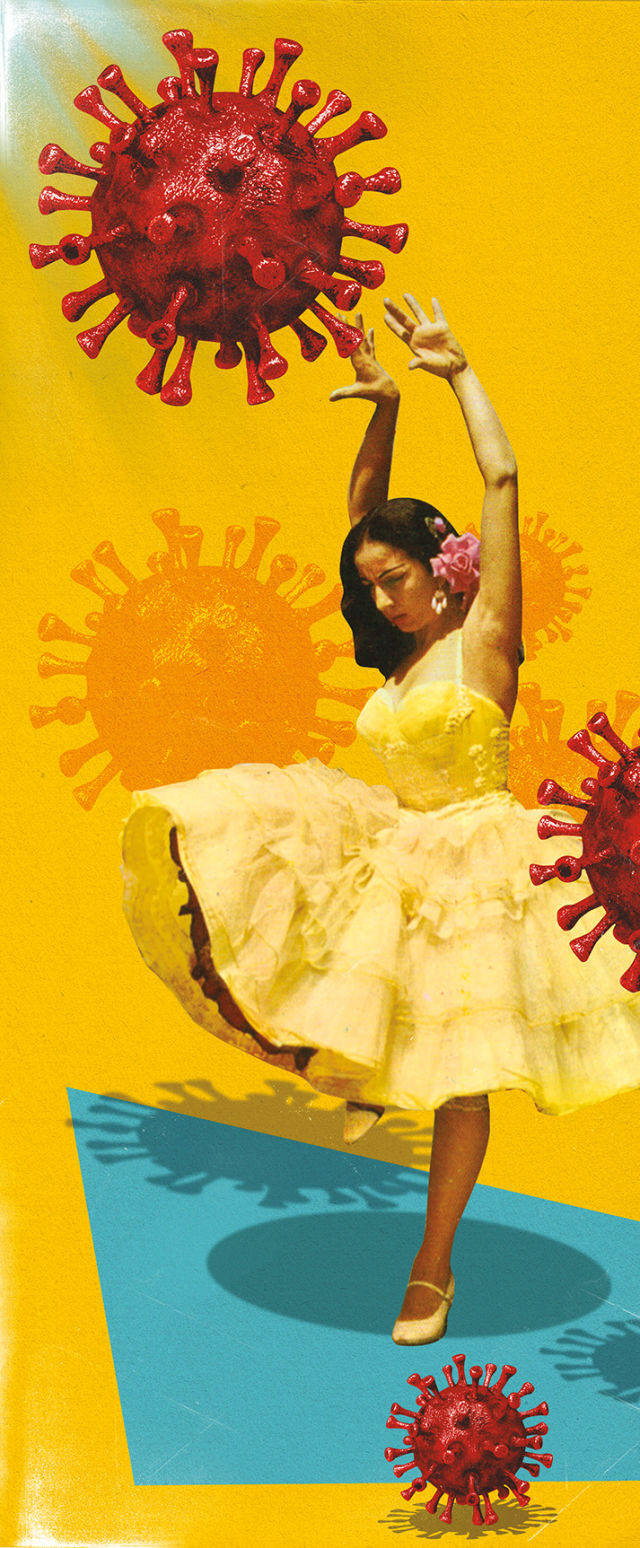Was COVID Really the Most Devastating Blow to Portland’s Art Scene?

Image: Matthew Billington
In the soft-edged dreamscape of January 2020, when “coronavirus” was a distant whisper and people did wild things like go to movies and plays, Portland City Commissioner Nick Fish lost a long battle with cancer. Outpourings of grief and support zeroed in on his character, his loyalty to Portland despite the beckonings of higher office, and, crucially, his consistent support for the arts. In the following days, as the social media tributes stacked up, a nagging question ripped through the community: what now?
“Nick Fish showed up ... and not just to [events] that we all know are the mainstay,” says Subashini Ganesan, a choreographer whom Fish named Portland’s Creative Laureate in 2018. “The connection between the city and the wider arts scene, that human connection, is gone.”
At this point, Fish’s passing probably doesn’t strike the average person as a top-100 threat to Portland’s cultural landscape. But as COVID-19 has pushed even the city’s sturdiest arts orgs to the brink of extinction, reflecting on the response to his death makes one thing clear: the arts were in trouble long before the words “social distancing” entered our lexicon. The question is why, and how can we fix it?
Walter Jaffe and Paul King founded White Bird, a company that presents dancers from around the world in Portland, in 1997. They see a once-unified cultural landscape that’s atomized in recent years, pointing to a combination of factors: the loss of allies, like Fish and former mayors Sam Adams and Vera Katz, in city hall; changing leadership in bodies like the Regional Arts and Culture Council (RACC); and a lack of interest in economic relief for the arts that dates back to the Great Recession.
“It comes down to people and their priorities and what they’re passionate about,” says King, who laments what he sees as a change in character for the city since he and Jaffe started White Bird—particularly a seismic shift in outside focus from Portland’s art to its food. “It’s not just ‘COVID caused a terrible situation for the arts.’ No. It’s not that. It’s pure lack of recognition of our needs and our importance.”
He and Jaffe cite, for example, the 2015 shuttering of Business for Culture and the Arts, a group that helped link arts orgs with some $100 million in corporate donations during its three decades of operation. There’s also been a changing of the guard: in January, RACC eliminated a corporate giving program that allowed employees at participating companies to donate portions of their paychecks directly to a cultural organization of their choosing. Plenty of artists—Jaffe and King among them—have criticized the decision. But it came under the leadership of Madison Cario, an engineer and former marine, whose tenure at the head of RACC has been characterized by a deemphasis on support for legacy Portland institutions in favor of individual artists from diverse backgrounds, a priority Cario highlighted when January’s internal reorganization was announced.
Ganesan sees this shift in focus as a key takeaway from a very taxing year. “We might have reminded everybody that an arts organization is dependent on the artists, not the other way around,” she says, noting the people with the most job security in the arts sector are more often administrators than artists themselves. “This year we’ve seen the path we’ve taken, and how devastatingly unsustainable it is for artists who actually fulfill the mission of an organization. So how can we not forget that important lesson?”
She acknowledges the challenges in maintaining a healthy creative ecosystem in any American city, but feels that, before COVID, something was coming together: a communion of the old and the new, movement toward something more truly representative than the landscape of the past. During the pandemic, she’s participated in performances that dovetailed with Black Lives Matter protests and calls herself a “practical optimist” about Portland’s creative future, so long as organizations internalize the importance of prioritizing artist protections.
“I think it’s going to fundamentally change what art is. And to me, that’s exciting,” she says. “It’s not a top-down thing anymore. Maybe it will become more artist-driven, which could cause some really innovative things to happen.”
Meanwhile, Jaffe and King say White Bird, which relies not only on the regular assembly of large crowds but also on frequent international travel, is in dire straits. They’ve commissioned an upcoming piece from a pair of dancers in Israel and North America, hoping to marry video presentation with live performance, but the future of the company beyond that piece remains unclear. The 2020–21 season was canceled, like so many seasons in Portland and across the world, and 2021–22 is a question mark.
Their hope isn’t gone, but it’s bruised, and they fear that in a repeat of the postrecession landscape, the arts will fall off as a legislative priority when assessing the damages of COVID. “On city council, we need three votes,” King says. “I don’t know if we have ’em.”
Two new commissioners will soon sit on the council: Latino Network director Carmen Rubio will fill the seat of a retiring Amanda Fritz, and former poli-sci professor Mingus Mapps is replacing longtime bookstore owner Chloe Eudaly, who had inherited the city’s arts portfolio from Nick Fish. Neither of their campaigns made much mention of the arts. Meanwhile, Fish’s empty seat was filled in an August runoff election by nonprofit leader Dan Ryan, a former development director for the Oregon Ballet Theatre. The new council’s priorities remain to be seen. But with fresh political blood and new institutional focuses, maybe it’s time for some practical optimism.




